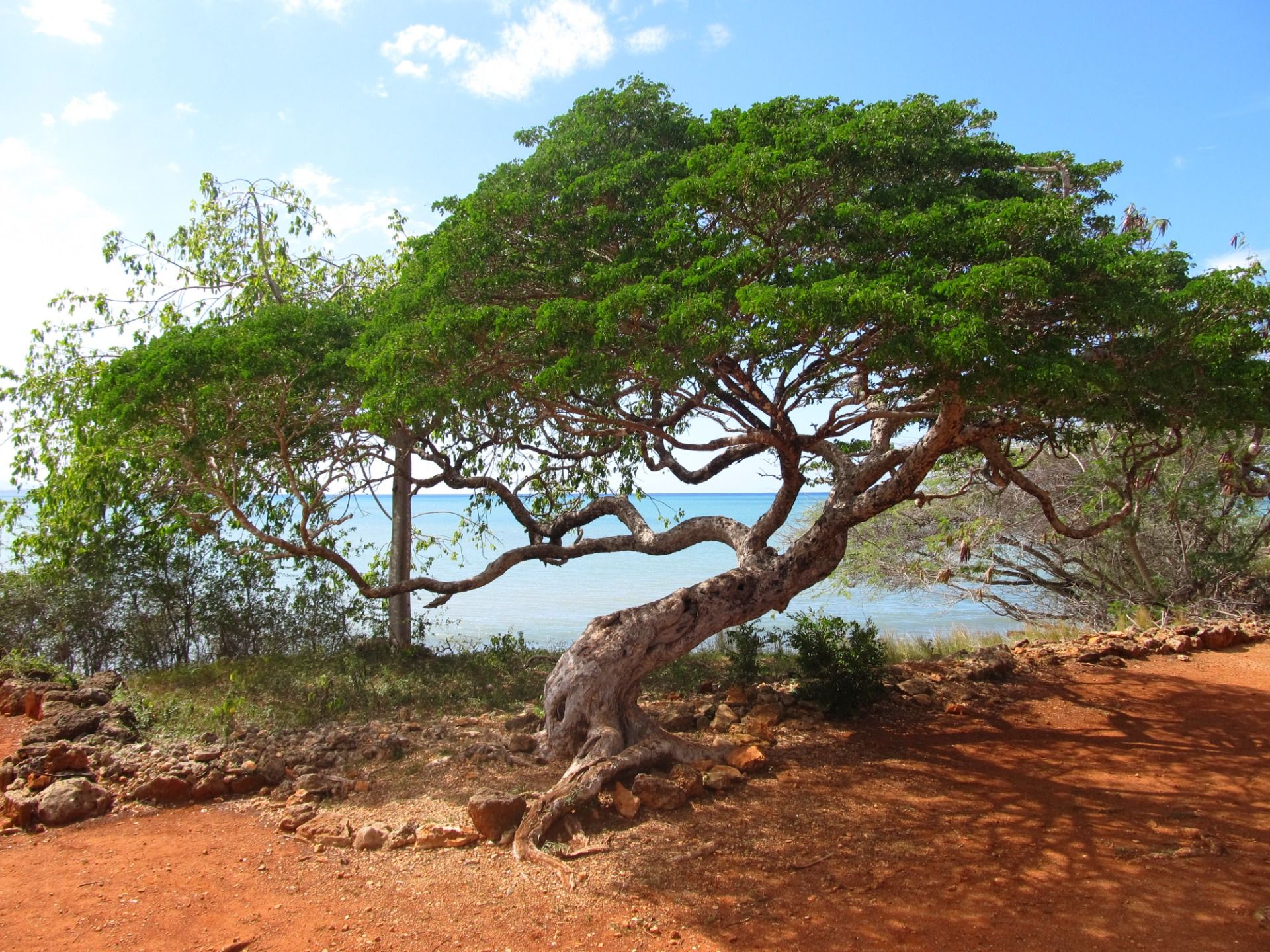[PL]
Mniej więcej po pół godzinie czekania odjeżdżamy do Luperon. W Luperon umawiam się z motoconcho, aby zawiózł nas do La Isabeli i z powrotem. Ustalamy cenę i jedziemy. Za umówioną cenę miał mnie zawieść do La Isabeli i z powrotem. On jednak za punkt honoru przyjął pokazanie mi jak najwięcej w okolicy - oczywiście bez dodatkowej opłaty. Po drodze pokazał mi plażę z ładnym widokiem na wybrzeże Dominikańskie i Haitańskie oraz zawiózł do Pierwszego Kościoła Nowego Świata - Primera Iglesia del Nuevo Mundo.
[EN]
After about half an hour of waiting, we go to Luperon. In Luperon, I arrange with the motorbike driver to drive us to La Isabela and back. We set a price. The price was supposed to include a fare for the way back and forth, but it was a matter of honor for the driver to show me as much as possible in the area. On the way, he showed me the beach with a nice view of the Dominican and Haitian coasts and drove me to the First Church in America.

[PL]
Jednak najciekawszym miejscem był Park Historyczny La Isabela. To tutaj dopłynął Krzysztof Kolumb podczas swej drugiej wyprawy do Nowego Świata w 1493r. Miejsce to nazwał La Isabela na cześć królowej Hiszpanii. To tutaj założył pierwsze europejskie osiedle Nowego Świata. To stąd rozpoczęła się ekspansja kolonizatorów, w końcu to tu Kolumb postawił swój pierwszy dom w Nowym Świecie i to tu 6 stycznia 1494r ojciec Fray Bernardo Boil odprawił pierwsza mszę.
[EN]
However, the most interesting place was La Isabela Historical Park. It was here that Christopher Columbus arrived during his second trip to the New World in 1493. He named it La Isabela like the Queen of Spain. It was here that he founded the first European settlement of the New World. It was from here that the expansion of the colonizers began, after all, it was here that Columbus built his first house in the New World and it was here that on 6th January 1494, Father Fray Bernardo Boil celebrated the first mass.

[PL]
W miejscu tym wylądowało 17 statków hiszpańskich wyładowanych wszelkimi dobrani niezbędnymi do założenia osady i rozpoczęcia tu życia - na statkach było ok. 1500 mężczyzn, trzoda chlewna, konie, bydło, a także nasiona i sadzonki roślin - min. trzciny cukrowej, która doskonale przyjęła się w tutejszym klimacie, i do dnia dzisiejszego jest bardzo ważną uprawą.
[EN]
17 Spanish ships landed in this place, unloaded with all the necessary to establish a settlement and start life here - there were about 1,500 men on board, pigs, horses, cattle, as well as seeds and plant cuttings - among others sugarcane, which has become well-established in the local climate, and to this day is a very important cultivation.

[PL]
La Isabela była sporym miasteczkiem z rezydencją Kolumba, ufortyfikowanym magazynem i rynkiem otoczonym domami z kamienia. W ciągu dwóch lat większość kolonizatorów zmarła z powodu malarii i chorób tropikalnych. Ponieważ miejscowi Indianie byli za słabi do katorżniczej pracy, na wyspę zaczęto sprowadzać niewolników z Afryki. Obecni mieszkańcy Dominikany to właśnie potomkowie kolonizatorów hiszpańskich oraz przywiezionych z Afryki murzyńskich niewolników.
[EN]
La Isabela was a rather large town with Columbus' residence, a fortified warehouse and a market square surrounded by stone houses. Within two years, most of the colonizers died from malaria and tropical diseases. The Indians were too weak to work hard, so slaves from Africa began to be brought to the island. The current inhabitants of the Dominican Republic are the descendants of the Spanish colonizers and the Negro slaves brought from Africa.
Wszystkie zdjęcia własnego autorstwa
All photos are taken by me
![[EN/PL] La Isabela - Here, where Columbus discovered America) -Tu, gdzie Kolumb odkrył Amerykę.](https://img.truvvle.com/?src=aHR0cHM6Ly9pbWcudHJhdmVsZmVlZC5pby92ZXJ0aWNhbGxpZmUlMkYyMDIxMDUwOFQyMDQ5MTEyMjlaLUlNR181Mjg2LmpwZw&width=3840)